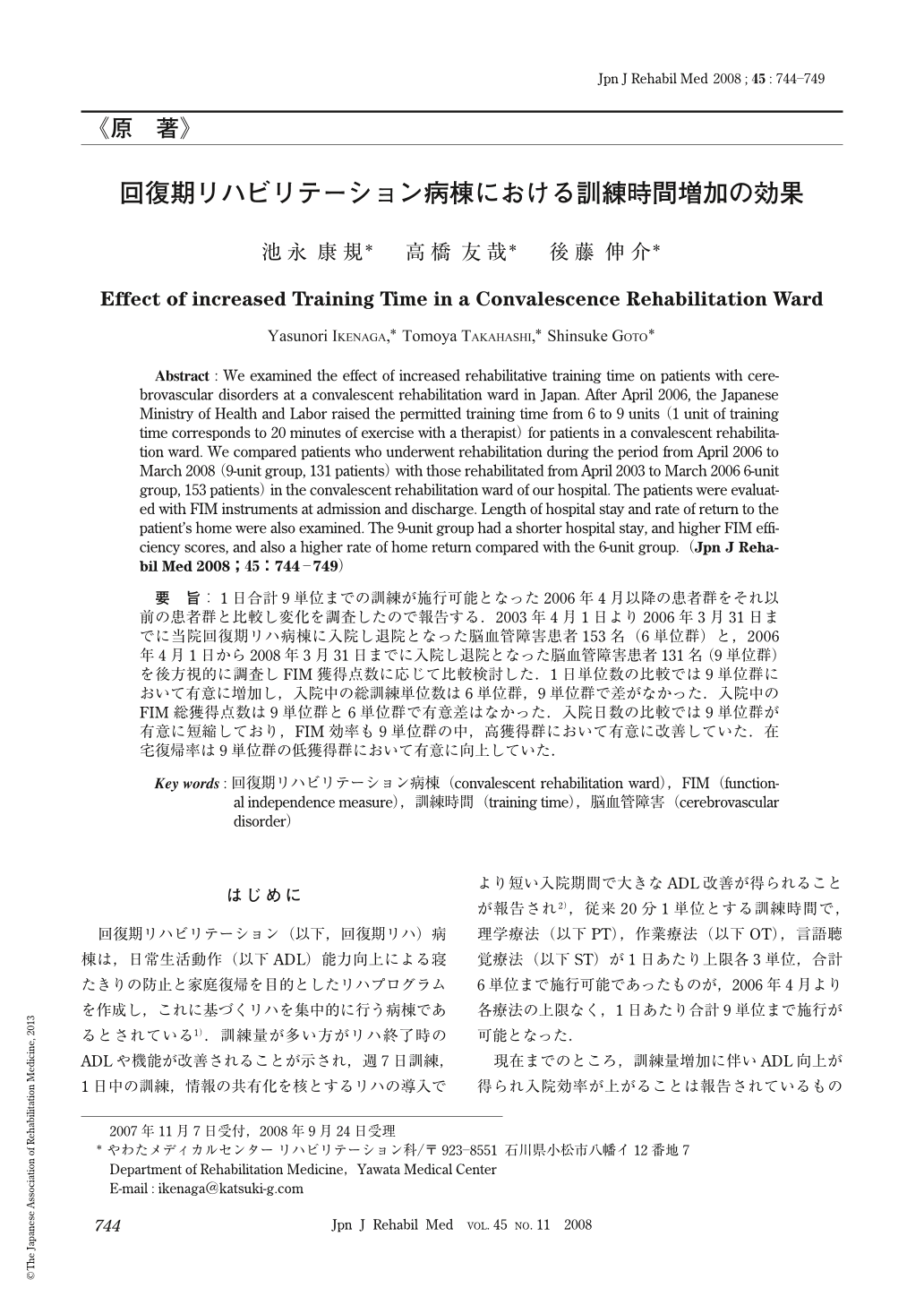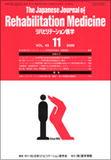Japanese
English
- 販売していません
- Abstract 文献概要
- 1ページ目 Look Inside
- 参考文献 Reference
要旨:1日合計9単位までの訓練が施行可能となった2006年4月以降の患者群をそれ以前の患者群と比較し変化を調査したので報告する.2003年4月1日より2006年3月31日までに当院回復期リハ病棟に入院し退院となった脳血管障害患者153名(6単位群)と,2006年4月1日から2008年3月31日までに入院し退院となった脳血管障害患者131名(9単位群)を後方視的に調査しFIM獲得点数に応じて比較検討した.1日単位数の比較では9単位群において有意に増加し,入院中の総訓練単位数は6単位群,9単位群で差がなかった.入院中のFIM総獲得点数は9単位群と6単位群で有意差はなかった.入院日数の比較では9単位群が有意に短縮しており,FIM効率も9単位群の中,高獲得群において有意に改善していた.在宅復帰率は9単位群の低獲得群において有意に向上していた.
Abstract : We examined the effect of increased rehabilitative training time on patients with cerebrovascular disorders at a convalescent rehabilitation ward in Japan. After April 2006, the Japanese Ministry of Health and Labor raised the permitted training time from 6 to 9 units (1 unit of training time corresponds to 20 minutes of exercise with a therapist) for patients in a convalescent rehabilitation ward. We compared patients who underwent rehabilitation during the period from April 2006 to March 2008 (9-unit group, 131 patients) with those rehabilitated from April 2003 to March 2006 6-unit group, 153 patients) in the convalescent rehabilitation ward of our hospital. The patients were evaluated with FIM instruments at admission and discharge. Length of hospital stay and rate of return to the patient's home were also examined. The 9-unit group had a shorter hospital stay, and higher FIM efficiency scores, and also a higher rate of home return compared with the 6-unit group.

Copyright © 2008, The Japanese Association of Rehabilitation Medicine. All rights reserved.


